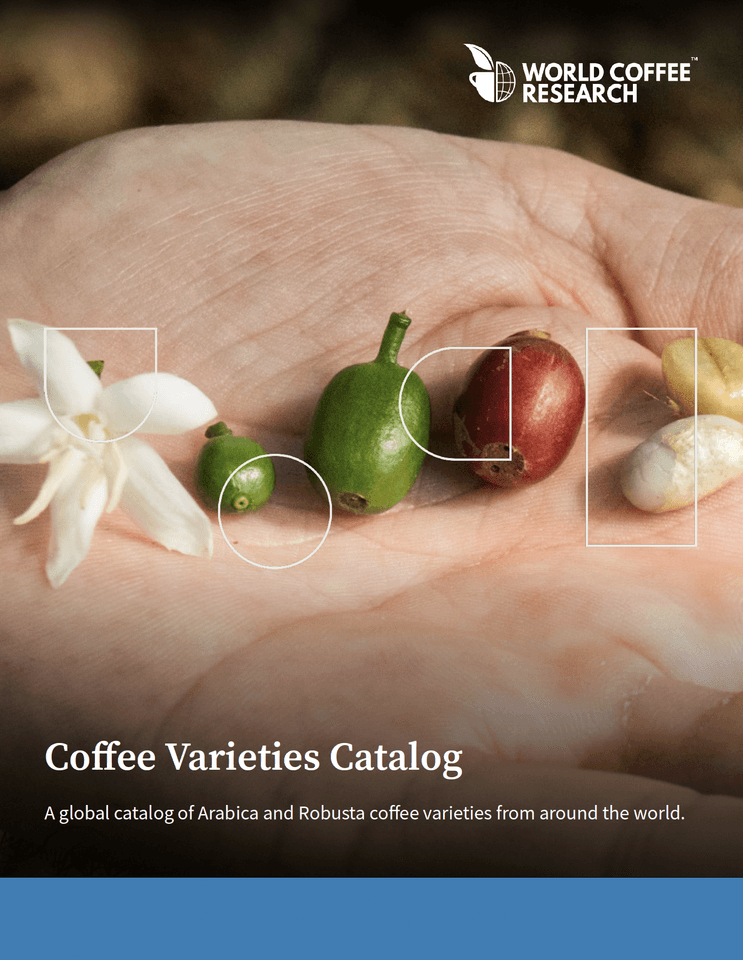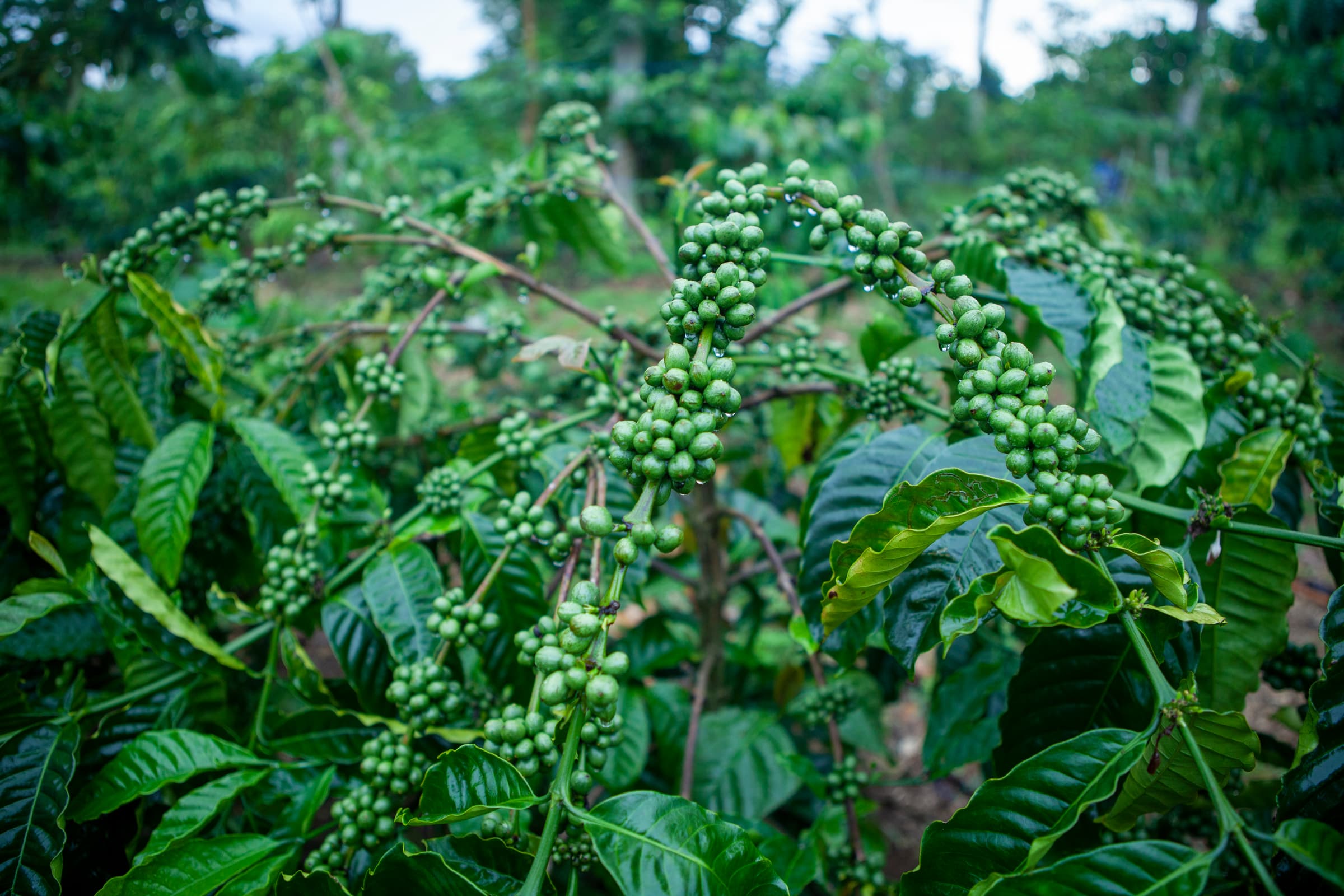World Coffee Research releases new Robusta variety catalog
Resource will support farmers in making informed decisions about varieties

Robusta seedlings. Photo by Armin Hari.
Robusta farmers have a new open-access resource at their fingertips—World Coffee Research’s (WCR) Robusta Variety Catalog. The catalog, which is available in English and Spanish, profiles 47 robusta varieties—from origins such as Brazil, India, Indonesia, Uganda, Mexico, and Vietnam—using 20+ variables, like yield potential, stature, bean size, nutrition requirements, lineage, susceptibility to pests/diseases, and many more. With robusta’s growing prevalence in the global market, WCR hopes the catalog will lower the risk associated with coffee farming by providing direct information to enable farmers and other planting decision-makers to make an informed choice about what varieties will grow best in particular environments.
Since the life of a coffee tree is 20-30 years, the decision farmers make about which variety to plant has long-term consequences. If a farmer makes an uninformed decision on variety, the cumulative loss can be huge. Comparatively, if a farmer makes the right decision, the cumulative gain can be significant. For example, a robusta farmer in Uganda who successfully cultivates a healthy Coffee Wilt Disease resistant (CWD-r) plant can earn 250% more than a farmer who plants a susceptible, unhealthy plant.1
With this, though, most robusta farmers in particular do not have access to transparent information about available varieties and how they differ. Robusta farmers typically sell into lower-value markets where variety differentiation is nonexistent. In addition, robusta requires more than one variety and simultaneous flowering for successful pollination. Because of this, farmers must cultivate a variety of complementary clones to enhance fruit production and quality. These mixtures, which typically comprise officially-released commercial varieties, are often distributed to farmers with minimal transparency about what clones are included in the mix and their unique properties. The lack of a comprehensive, up-to-date variety information and officially recommended planting patterns puts farmers at risk and perpetuates chronically low yields around the globe.
"Now that robusta comprises 40% of the coffee produced and marketed globally, we saw the need to support farmers by creating this tool.”

Coffee varieties catalog
This resource serves as an expansion of WCR’s popular Arabica Variety Catalog, which was launched in 2016 and profiles arabica varieties from around the world. At the time of its release, the arabica catalog was a first-of-its-kind resource and the only global compendium of information about available coffee varieties for farmers, buyers, and roasters. The resource has been viewed over 1 million times since its launch and, as a living document, continues to support WCR’s goal to improve the availability and accessibility of improved planting material for farmers around the world.
Until recently, arabica held reign over most of the coffee market due to preferences for its beverage quality, but various factors, including the increasing demand and climate pressure for farmers, have led to expansions in the production of robusta.
“Since our founding over ten years ago, WCR has worked to empower farmers by making tools available to choose the right varieties for their farms and their markets—varieties that deliver high yield and better-tasting coffee in the long term,” said WCR’s Chief Executive Officer Dr. Jennifer “Vern” Long. “And, now that robusta comprises 40% of the coffee produced and marketed globally, we saw the need to support farmers by creating this tool.”

Healthy robusta tree with cherries. Photo by Armin Hari.
The robusta catalog was generated through collaborative sourcing of data about varieties from breeders and other experts, including the Central Coffee Research Institute (CCRI), the Indonesian Coffee and Cocoa Research Institute (ICCRI), the Brazilian Agricultural Research Corporation (EMBRAPA), the National Coffee Research Institute of Uganda (NaCORI-Uganda), the Western Highlands Agroforestry Science Institute (WASI), and Nestlé’s Research Center. The varieties in the robusta catalog were selected for inclusion because of their economic, historical, cultural, or genetic importance. Even so, significant gaps in data for many Robusta varieties remain. The genetic diversity of robusta coffee is also much larger than that of arabica, and it is only just beginning to be explored by breeders and the industry at large. The catalog, therefore, does not aim to represent an exhaustive list of all coffee varieties in existence.
Alongside the detailed variety profiles, users can find a consolidated and peer-reviewed history of robusta as a species, which tracks it from its origins in central and western sub-Saharan Africa through its dispersal across Asia and Latin America to its cultivation today. In addition, the history provides a brief overview of the genetic diversity and conservation of robusta to provide readers the opportunity to better understand how well-differentiated the various populations of this species are.
Users of the robusta catalog can access it free of cost via an interactive component on WCR’s website or by downloading customizable and printable PDF files.
1See Figure 6 in “Enhancing Innovation in the Ugandan Agri-Food Sector : Robusta Coffee Planting Material & Tropical Fruit Processing” (Lybbert et al. 2018), accessible here.